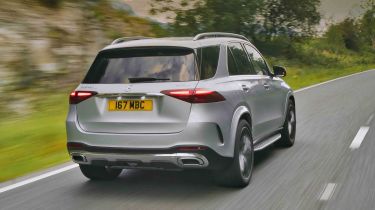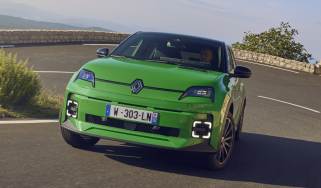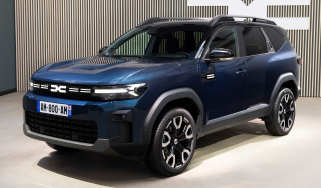Mercedes GLE - Engines, performance and drive
The Mercedes GLE majors on comfort, especially when riding on air suspension
Whichever way you look at it, the Mercedes GLE is a big car. It’s not quite at the same level as a full-size Range Rover (that task is reserved for the GLS), but it’s taller and wider than an Audi Q7 and larger in every dimension compared to the BMW X5. Don’t think it drives like a bus though, Mercedes has given the GLE surprisingly tidy handling characteristics.
Most impressive is the ride quality, because the GLE is one of the most comfortable and refined cars in its class. While that used to be especially true if you’ve opted for a six-cylinder model, as these cars were fitted with Airmatic air suspension as standard - that feature is now standard across the board.
It also means that the GLE remains remarkably flat and poised, whether you’re gliding along a motorway or chucking it into some bends. The steering lacks the feel required to deliver the confidence to really press on, but it’s nicely weighted and well suited to a car of this size.
A nine-speed automatic transmission is fitted as standard, and it does a slick and effortless job of scrolling through the gears. A pair of paddles mounted behind the steering wheel deliver greater control when you’ve ventured off the motorway. The 4MATIC four-wheel drive system is fitted as standard across the range.
More reviews
Car group tests
In-depth reviews
Road tests
- Mercedes GLE 400e AMG Line review: plug-in hybrid SUV struggles in talented field
- New Mercedes GLE 400 d Coupe 2020 review
- New Mercedes-AMG GLE 53 2020 review
- New Mercedes-AMG GLE 53 Coupe ride review
Used car tests
As you’d expect, there’s loads of grip on offer, but the GLE has a tendency to provide safe and controllable understeer if you try to force the issue. The overriding feeling is that this was a car designed to be a luxurious, refined and comfortable SUV, and in this respect it excels. The plug-in hybrid is obviously the quietest when running in electric-only mode, but should you require the assistance of the petrol engine, it’s not as seamlessly integrated as the system on a BMW X5 PHEV.
The range-topping AMG 63 variant should deliver plenty of thrills with its characterful V8 engine and rampant performance. It also gets a great list of standard equipment, plus an eye-catching bodykit to match the extra noise of the engine.
Engines, 0-60 acceleration and top speed
The entry-level 300 d diesel used to pump out 242bhp, but the addition of mild-hybrid power increased this to 265bhp. There’s also a meaty 550Nm of torque for a 0-62mph time of 6.9 seconds - respectable given it weighs 2,335kg.
The six-cylinder diesel unit is smoother and more refined. The current GLE was initially launched with a 268bhp 350 d and a 362bhp 400 d but sitting atop the diesel range is now the 450 d with 361bhp and 750Nm of torque, allowing for a 0-62mph time of 5.6 seconds.
The petrol 450 makes use of 375bhp but less torque than its diesel sibling with 500Nm. The acceleration figure is identical to the 450 d’s, however, at 5.6 seconds.
Despite focusing on efficiency, the plug-in hybrid 450 e returns decent straight-line performance. A 2.0-litre, four-cylinder petrol engine is mated to a substantial 31.2kWh battery with a total of 375bhp and 650Nm of torque. The 0-62mph time of 6.1 seconds, is all the more impressive when you learn the PHEV model is the heaviest version by far at 2,645kg.
Almost every Mercedes model is touched by the Mercedes-AMG performance subdivision these days and this extends to the German firm's range of SUVs too. With the GLE there’s an AMG 53 with a 3-litre six-cylinder mild-hybrid putting out 429bhp and 560Nm of torque for a 0-62mph time of five seconds flat. The GLE 63 S has a twin-turbocharged 4.0-litre V8 with 603bhp and 850Nm of torque for a 3.9-second 0-62mph time and 174mph top speed.









